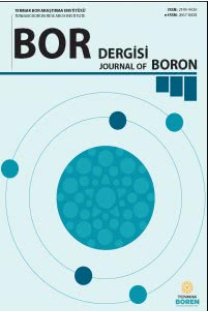The effect of boric acid on copine-7 expression and bioactivity in dental pulp-obtained stem cells
Boron has significant impact on the mineral composition of teeth. Copine-7 (Cpne-7) is secreted by pre-ameloblasts and induces dentin formation via differentiation of mesenchymal cells of dental. The goal of this study was to see how boric acid affected the bioactivity and expression of Cpne-7, collagen type I in dental pulp-obtained stem cell. The expression of Cpne-7, COL-I were assessed in the boric acid treated pulp cells by molecular method on 3 and 8 days exposure. When comparing the different boric acid concentrations to the control group in a proliferation experiment, no significant differences were noted. At 10 ng/mL boric acid, a rise in the number of mineralized nodules was observed. Boric acid concentrations (1 ng/mL, 10 ng/mL) increased the transcripts of Cpne-7 on day 3 and 8. Additionally, 1 ng/mL boric acid concentration significantly upregulated of Cpne-7 expression compared to control group on day 3 and 8. When the 1-10 ng boric acid was compared to control group COL-I expression remarkably enhanced in cell. According to the current findings that boric acid may be a potent regulator of Cpne-7, which is a promising candidate for new dentin formation in regenerative dentistry, in dental pulp-obtained mesenchymal stem cells and provide osteogenic efficacy in therapies aimed at dentin formation.
Anahtar Kelimeler:
Boric acid, Cpne-7, Pulp mesenchymal stem cells
The effect of boric acid on copine-7 expression and bioactivity in dental pulp-obtained stem cells
Boron has significant impact on the mineral composition of teeth. Copine-7 (Cpne-7) is secreted by pre-ameloblasts and induces dentin formation via differentiation of mesenchymal cells of dental. The goal of this study was to see how boric acid affected the bioactivity and expression of Cpne-7, collagen type I in dental pulp-obtained stem cell. The expression of Cpne-7, COL-I were assessed in the boric acid treated pulp cells by molecular method on 3 and 8 days exposure. When comparing the different boric acid concentrations to the control group in a proliferation experiment, no significant differences were noted. At 10 ng/mL boric acid, a rise in the number of mineralized nodules was observed. Boric acid concentrations (1 ng/mL, 10 ng/mL) increased the transcripts of Cpne-7 on day 3 and 8. Additionally, 1 ng/mL boric acid concentration significantly upregulated of Cpne-7 expression compared to control group on day 3 and 8. When the 1-10 ng boric acid was compared to control group COL-I expression remarkably enhanced in cell. According to the current findings that boric acid may be a potent regulator of Cpne-7, which is a promising candidate for new dentin formation in regenerative dentistry, in dental pulp-obtained mesenchymal stem cells and provide osteogenic efficacy in therapies aimed at dentin formation.
Keywords:
Boric acid, Cpne-7, Pulp mesenchymal stem cells.,
___
- 1. Park, Y-H., Lee, Y.S., Park, J-S., Kim, S.H., Bae, H.S., & Park, J-C. (2019). Expression of CPNE7 during mouse dentinogenesis. Journal of Molecular Histology, 50, 179-188.
- ISSN: 2149-9020
- Yayın Aralığı: Yılda 4 Sayı
- Başlangıç: 2016
- Yayıncı: TENMAK Bor Araştırma Enstitüsü
Sayıdaki Diğer Makaleler
The effect of boric acid on copine-7 expression and bioactivity in dental pulp-obtained stem cells
Serife Buket BOZKURT, Sema Sezgin HAKKI
Yeni Bir Organoboron Monomerinin Sentezi, Elektrokimyasal Karakterizasyonu ve Biyosensör Uygulaması
Nımet YILDIRIM TİRGİL, Zeycan KALKAN, Soner ÖZTÜRK
Tuba BAYGAR, Nurdan SARAÇ, Özgür CEYLAN, Aysel UĞUR, Rukiye BORAN, Uydu BALCI
Sezer BİLKETAY, Batuhan SORUŞBAY, Hamit GÜLSOY
Bor sitrat uygulanan ratların serum ve plazmalarında bor tayini
Ömer Faruk KOÇAK, Alptuğ ATİLA, Zekai HALICI, Mevlüt ALBAYRAK
